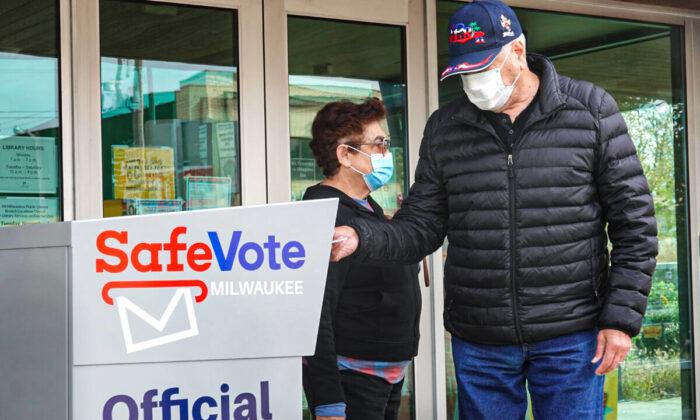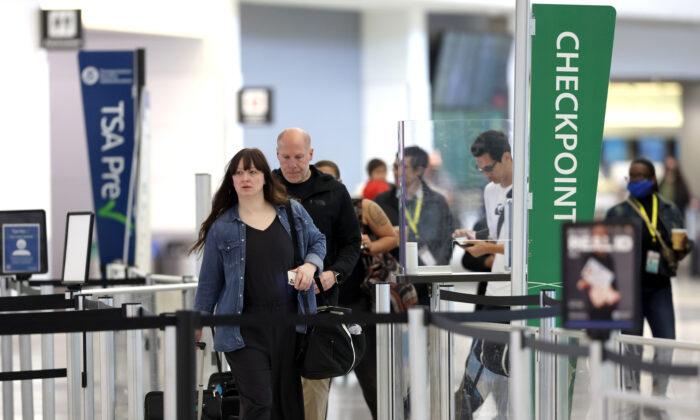The Supreme Court’s decision to hear challenges to affirmative action policies at Harvard and the University of North Carolina (UNC) is welcome news for those of us who have fought for a quarter of a century to end race-based preferences in college admissions.
At issue isn’t merely the admissions practices of two prestigious universities, one private and the other public, but the larger question of whether racial preferences are a legitimate way to promote diversity in higher education.
I tackled this very issue in my first book, “Illiberal Education,” published in 1991. In that book, I did an in-depth study of admissions practices at the University of California–Berkeley. I asked the admissions director there to consider a student with near-perfect grades, standardized test scores in the 90th percentile, and very good extracurricular talents.
If such a student were black or Hispanic, I asked, what’s the chance that he (or she) would be admitted to Berkeley? The admissions director said 99 percent; in other words, the student would virtually be guaranteed admission. Then I asked about a student with the very same grades, test scores, and extracurricular talent, except the student happened to be white or Asian American. What chance, I asked, would that student have of admission? The admissions directly candidly replied, “Less than 5 percent.”
This is affirmative action. It’s a far cry from how affirmative action was first presented in the late 1960s and 1970s. Then, advocates spoke of admissions officers publicizing opportunities in black and Hispanic neighborhoods so that eligible applicants would be encouraged to apply, or choosing among equally qualified applicants, and merely giving the nod to the black or Hispanic student.
Affirmative action in practice, however, is entirely different. For nearly the past half-century, it has meant creating a university admissions policy that operates along separate racial tracks. This doesn’t mean that merit or competition gets thrown out the window. What it does mean is that students only compete on a merit basis with other members of their own racial group: Asians against Asians, whites against whites, blacks against blacks, and so on.
The effects of this are quite startling, as we can see from the current data on Harvard admissions. Basically, we find that Asian Americans in the 90th percentile are accepted at the same rate as whites in the 80th percentile, Hispanics in the 60th percentile, or blacks in the 40th percentile. In sum, very smart Asian Americans are turned away in order to admit very mediocre blacks.
The institutionalization of racial preferences is a stunning repudiation of Martin Luther King Jr.’s dream that we want to move to a society where we are judged not by the color of our skin but rather by the content of our character. It’s also a startling reversal of the clear language of the Civil Rights Act of 1964, which speaks of eliminating racial discrimination throughout the laws and practices of American society—not merely in the public sector but also in the private sector.
Legal scholar Andrew Kull, in his book “The Color-Blind Constitution,” points out that the elimination of racial categories from law and policy was the shared goal of blacks and of the civil rights movement for nearly a century, from the Civil War era through the 1960s. Combing through the speeches of the great black abolitionist Frederick Douglass, I found as early as 1849 a resounding call for a race-neutral society, one that would be more famously echoed by King more than a century later.
So what happened? Basically, the liberals who had fought so hard for the color-blind principle gave up on it almost immediately upon winning the argument and having the laws changed to reflect the triumph of their great cause. Now some of the very same people who previously championed color-blindness insist that one has to practice discrimination in order to fight discrimination, and moreover that “benign” racial discrimination was acceptable to promote campus diversity and other worthwhile objectives.
The problem is that all discrimination seems benign to the person who’s benefiting from it, and all discrimination is invidious to the person who’s made to suffer from it. Moreover, it’s one thing to compensate an actual victim of discrimination by making that person whole; it’s something else entirely to give preference to blacks and Hispanic applicants who haven’t demonstrated any racial victimization whatsoever, and to take away coveted admissions seats from white and Asian American applicants who haven’t discriminated against anyone.
What about diversity? Clearly, the most important type of diversity in a university setting is intellectual diversity, diversity of ideas. The remarkable consequence of widespread affirmative action has been to accentuate one type of diversity—campuses that “look like America”—while at the same time fortifying intellectual homogeneity.
Today, campuses such as Harvard and UNC have become engines of ideological indoctrination. Not even the deans and professors who inhabit those places could say with a straight face that their students reflect the intellectual and political diversity of the nation at large. They might look like America, but they don’t think like America.
Happily, the Supreme Court seems to be onto the affirmative action racket.
Chief Justice John Roberts himself set the tone in 2007, when he wrote, “The way to stop discrimination on the basis of race is to stop discriminating on the basis of race.” Exactly! And I’m confident that six justices on the Supreme Court agree with this. Of course, Justice Elena Kagan—the former dean of Harvard Law School—and Justice Sonia Sotomayor will surely dissent, and we can expect the same from Biden’s replacement for Justice Stephen Breyer who is, after all, being openly selected on the basis of being black and female.
By striking down the racial discrimination built into the admissions policies of Harvard and UNC, the Supreme Court can send a powerful message that American law and policy has lost its way, and that we must begin the long road back to the idea that all in this country are a minority of one, and that we deserve to be judged on our merits as individuals, not on the basis of irrelevant characteristics such as our skin color, ethnic identification, or ancestral origin.





